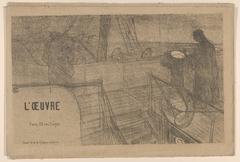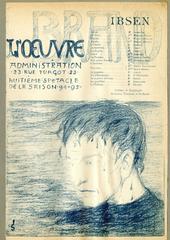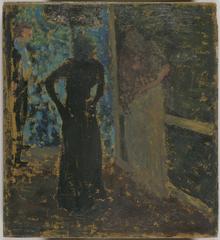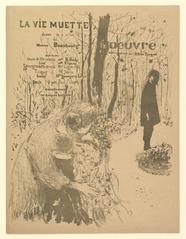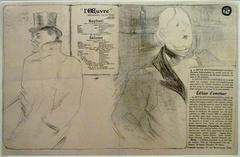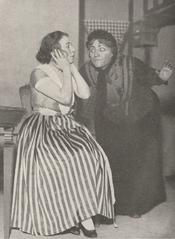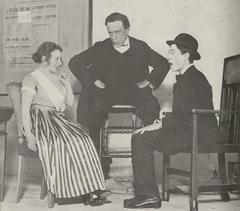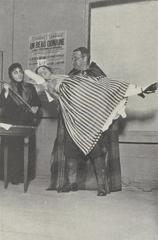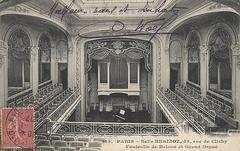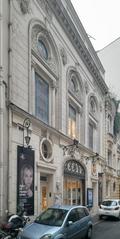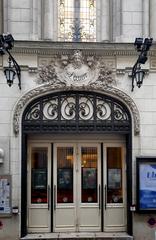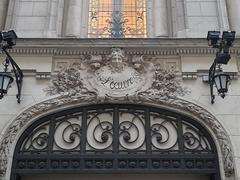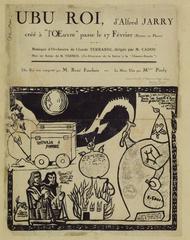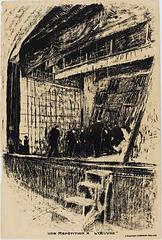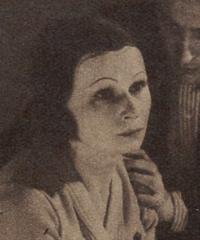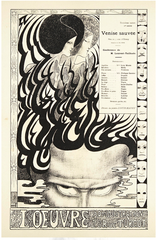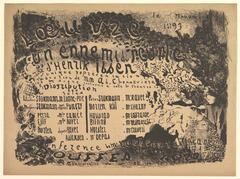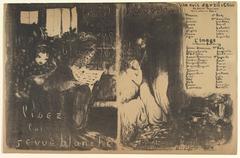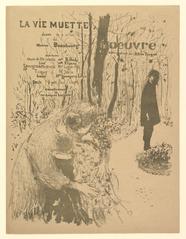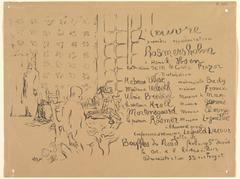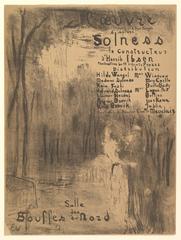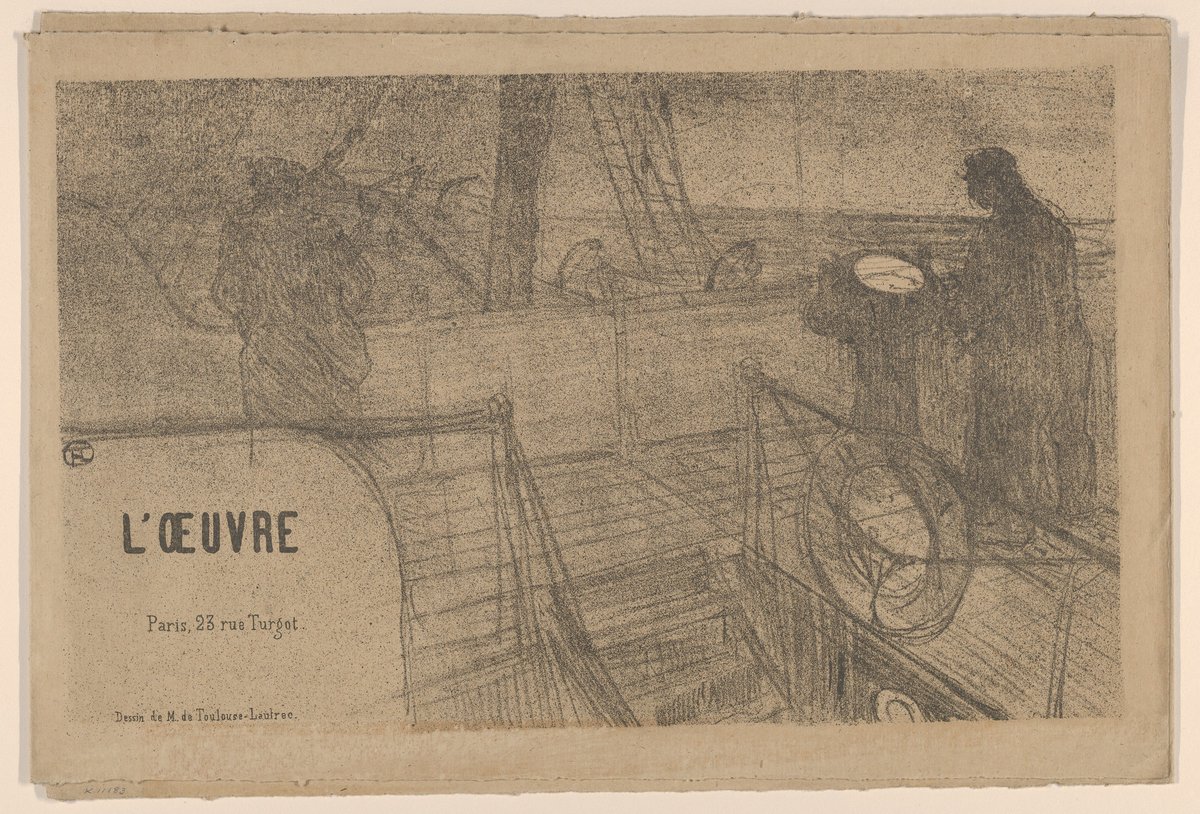
Théâtre de l’Œuvre Paris: Visiting Hours, Tickets, and Historical Significance
Date: 14/06/2025
Introduction
In the heart of Paris’s vibrant 9th arrondissement stands the Théâtre de l’Œuvre, a beacon of avant-garde arts and a living monument to the evolution of European theatre. Founded in 1893 by the visionary Aurélien-Marie Lugné-Poe, this intimate 336-seat venue has championed experimental drama, breaking away from commercial norms and ushering in new artistic movements such as Symbolism and Surrealism. Designed by Belgian architect Henry van de Velde, the theatre’s architecture fosters a unique closeness between audience and performer—a hallmark that continues to define its productions.
Over more than a century, the Théâtre de l’Œuvre has hosted groundbreaking premieres, from Alfred Jarry’s notorious “Ubu Roi” to contemporary works and concerts, while offering visitors an immersive experience complete with modern amenities and proximity to Paris’s cultural icons like Montmartre, Sacré-Cœur, and the Musée de la Vie Romantique. This guide delivers all the information you need to plan your visit, from ticketing and accessibility to programming and nearby attractions.
For the latest updates and details, consult the official website and reputable theatre resources (Theatre in Paris, Offi.fr, Official Théâtre de l’Œuvre).
Table of Contents
- Discover Théâtre de l’Œuvre: Paris’s Historic Hub of Avant-Garde Theatre
- Origins and Founding Vision
- Architectural Distinction
- Early Years and Artistic Innovation
- Impact on Symbolism and Surrealism
- Evolution Through the 20th and 21st Centuries
- Notable Productions and Artistic Figures
- Visiting Information
- Practical Visitor Tips
- Frequently Asked Questions (FAQ)
- Conclusion and Further Resources
Discover Théâtre de l’Œuvre: Paris’s Historic Hub of Avant-Garde Theatre
Théâtre de l’Œuvre is more than a performance venue—it is a testament to Paris’s enduring commitment to artistic experimentation. Whether you’re a theatre lover or a cultural explorer, a visit here provides insight into the evolution of European drama and a chance to experience intimate, innovative performances in a historic space.
Origins and Founding Vision
The Théâtre de l’Œuvre was established in 1893 by Aurélien-Marie Lugné-Poe, who sought to create a crucible for avant-garde drama and Symbolist innovation. Rebelling against the commercial theatrical establishment, Lugné-Poe envisioned a stage where radical new works and bold ideas could flourish, reflecting the Symbolist movement’s emphasis on suggestion, atmosphere, and inner life (Theatre in Paris).
Architectural Distinction
Located at 55 rue de Clichy, the theatre was designed by Henry van de Velde, whose architectural vision produced a harmonious blend of Art Nouveau elegance and functional intimacy. The 336-seat auditorium blurs the line between audience and stage, supporting subtle, emotionally resonant performances that define the venue’s hallmark style.
Early Years and Artistic Innovation
From its inception, Théâtre de l’Œuvre became synonymous with risk-taking and artistic innovation. Its early programming championed Symbolist drama, introducing Parisian audiences to international playwrights such as Maurice Maeterlinck, Henrik Ibsen, and August Strindberg. It also launched the careers of avant-garde French writers like Alfred Jarry, whose “Ubu Roi” in 1896 shocked and transformed the Parisian theatre scene (Theatre in Paris).
Impact on Symbolism and Surrealism
The theatre played a pivotal role in the development of Symbolism and, later, Surrealism. Productions often featured minimalist sets, evocative lighting, and poetic language, setting a new standard for theatrical expression and influencing the broader European arts landscape.
Evolution Through the 20th and 21st Centuries
Adapting to changing artistic trends, Théâtre de l’Œuvre expanded its repertoire through the 20th century to include reinterpretations of classics, contemporary plays, concerts, and citywide festivals. The theatre’s continuous innovation and commitment to new voices sustain its relevance in the Parisian cultural scene (Offi.fr).
Notable Productions and Artistic Figures
Legendary productions such as Alfred Jarry’s “Ubu Roi,” Maeterlinck’s “Pelléas et Mélisande,” and recent works like “Une heure à t’attendre” and “Amis pour la vie” highlight the venue’s enduring legacy. The theatre has seen performances by acclaimed artists including Michel Fau, Serge Merlin, and Isabelle Nanty, under the artistic direction of François-Xavier Demaison, Kim Poignant, and Benoît Lavigne (Offi.fr).
Visiting Information
Visiting Hours and Ticketing
- Box Office Hours:
- Monday: 11:00–18:00
- Tuesday to Saturday: 11:00–20:00
- Sunday: 11:00–15:00
- Performance Times: Evenings (usually 7:30–8:30 pm); weekend matinees at 3:00 pm.
- Ticket Prices: €8–€49, depending on production and seating. Discounts for students, seniors, and groups.
- How to Buy:
- Online: theatredeloeuvre.com
- In person at the box office
- By phone: 01.44.53.88.88
Advance booking is recommended due to the venue’s popularity and limited seating (Offi.fr).
Guided Tours and Special Events
Occasional guided tours delve into the theatre’s history and architecture—check the official website for schedules. The theatre also hosts special premieres, artist talks, and participates in citywide festivals.
Accessibility and Facilities
- Fully accessible for wheelchair users (Accès PMR); assistance available.
- Refreshment area (L’Ubu Café) for drinks and light snacks before/after performances.
- Cloakroom available; large luggage discouraged.
- Restrooms and helpful staff on site.
Directions and Nearby Attractions
- Address: 55 Rue de Clichy, 75009 Paris
- Metro: Place de Clichy (Lines 2 & 13), Liège (Line 13), Saint-Lazare (Lines 3, 12, 13, 14)
- Bus: Lines 21, 27, 32, 54, 66, 74, 81
- Nearby Sights: Montmartre, Sacré-Cœur, Musée de la Vie Romantique, Moulin Rouge, Opéra Garnier, Musée Gustave Moreau
Practical Visitor Tips
- Language: Most performances are in French; check for surtitles or English-language shows.
- Dress Code: Smart-casual attire is typical.
- Arrival: Arrive 15–30 minutes early to collect tickets and settle in.
- Etiquette: Punctuality is expected; latecomers may be admitted only during breaks. Silence phones and refrain from photography/recording.
Frequently Asked Questions (FAQ)
Q: What are the visiting hours?
A: The box office is open Monday 11:00–18:00, Tuesday to Saturday 11:00–20:00, and Sunday 11:00–15:00. Performances typically start between 7:30–8:30 pm on weekdays and 3:00 pm for weekend matinees.
Q: How do I buy tickets?
A: Purchase online at theatredeloeuvre.com, at the box office, or by phone (01.44.53.88.88).
Q: Is the theatre accessible for wheelchair users?
A: Yes, full accessibility is provided; inform the box office for assistance.
Q: Are guided tours available?
A: Occasionally, yes. Check the official website for dates.
Q: What attractions are nearby?
A: Montmartre, Sacré-Cœur, Musée de la Vie Romantique, Moulin Rouge, and Opéra Garnier are all within walking distance.
Conclusion
The Théâtre de l’Œuvre remains a vital part of Paris’s cultural landscape—where history, innovation, and artistry converge. Whether you’re attending a classic Symbolist play, a new work, or simply exploring the architectural marvel, this theatre promises an enriching and memorable experience for all visitors.
To plan your visit, check the official website for the latest updates, ticketing, and programming. Enhance your Parisian adventure by exploring nearby attractions and making use of the Audiala app for personalized recommendations.
References
- This guide was informed by the following resources:
